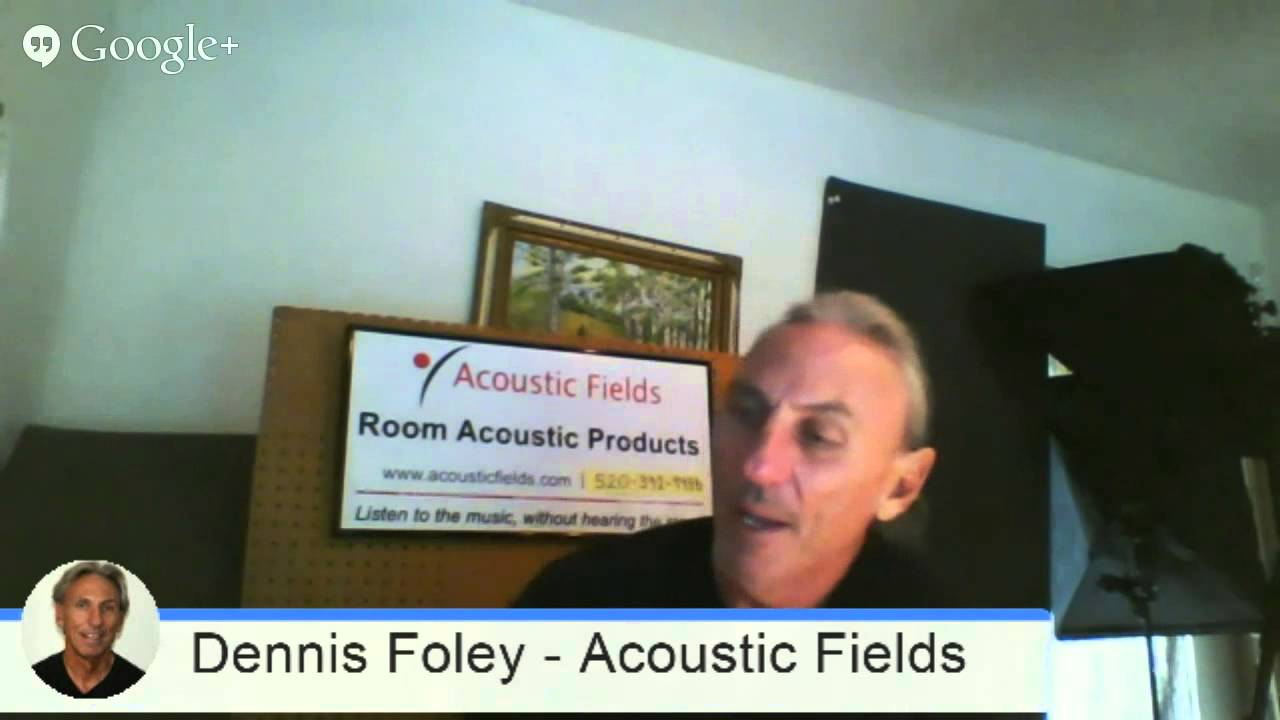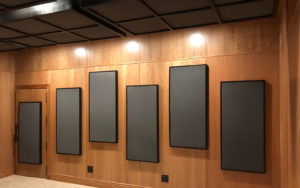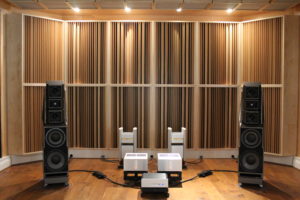Since its original posting this blog has been updated to reflect new information in regards to flutter echo, updated on 11/3/19 .
What is Flutter Echo?
Flutter echo is an energy that’s trapped between two surfaces and the angle that the sound enters between the two surfaces. In our rooms this occurs between an energy-producing device (speaker) and a wall. The sound energy depending on its wavelength is trapped between two parallel surfaces. You get a series of reflections in short time signatures and then that translates into energy moving across the area between those surfaces. This energy movement excites the air between those two surfaces and with that air excitation you get audible distortion. This distortion can occur between walls, cabinets and bookshelves.
What does it sound like? If you have an audio track and the first part of the track is in real-time and then you delay a few milliseconds, the next track which is the same as the first track, you just put a little delay in it, say a few milliseconds and then run them together that’s what it sounds like. It’s a phantom image that travels with the main image and you have both images trying to convince you they’re one and you can hear them both rather easily. Small space, parallel surfaces, will produce flutter echo that has the response curve that shows and corresponds to the dimensions of the space where it is occurring.
Flutter Echo Definition: https://en.wikipedia.org/wiki/Echo
Middle and High-Frequency
Flutter echo is usually a middle and high-frequency issue. Low-frequency energy is long waves of pressure. Waves of pressure do not get trapped in small dimensions. They go right through it. Middle and high-frequency energy is shorter in length and get trapped in 3, 4, 5′ areas. It is noticeable in middle and higher frequencies since the middle ranges are where we hear the voice and most of our music content. We must remember that flutter echo is caused by two parallel surface areas just like room modes are with unwanted and excessive low-frequency pressure.
Control Rooms
Control rooms must be very careful with flutter echo issues. The goal is any mix or control room is the translation. It is the music recorder from the sources that must be accurately represented in the mix. This is called translation. The engineer must hear the music and voice within the mix and not flutter echo, which sounds tiny and harsh. Control rooms treat flutter echo using absorption and diffusion. Absorption reduces the strength of the flutter echo and diffusion minimizes the reflected energy which produces it, and divides it up into a series of smaller reflections. The goal is to achieve spectral balance or even representation of all frequencies within the room.
Reverberation Times
In the consumer world, flutter echo and reverberation times are a large concern with our clients. Most rooms in North America are made of drywall. Drywall will add to higher reverberation times. Our goal is lower Rt-60 times. One can think of reverberation as the summation of all reflections from all room boundary surfaces. If you add the reflections from the side, rear, front, and ceiling all together you get what is called an Rt-60 time. This is a measurement that allows for a sound to reduce itself by running out of energy within the room by 60 dB. Flutter echo would be the “noise” we would get from the side walls or the front and rear walls along with floor to ceiling, it would also be part of the Rt-60 distortion. They both represent room distortion.
- Acoustic Foam Panels in Studio
- Quadratic Diffuser Placement on Front Wall









